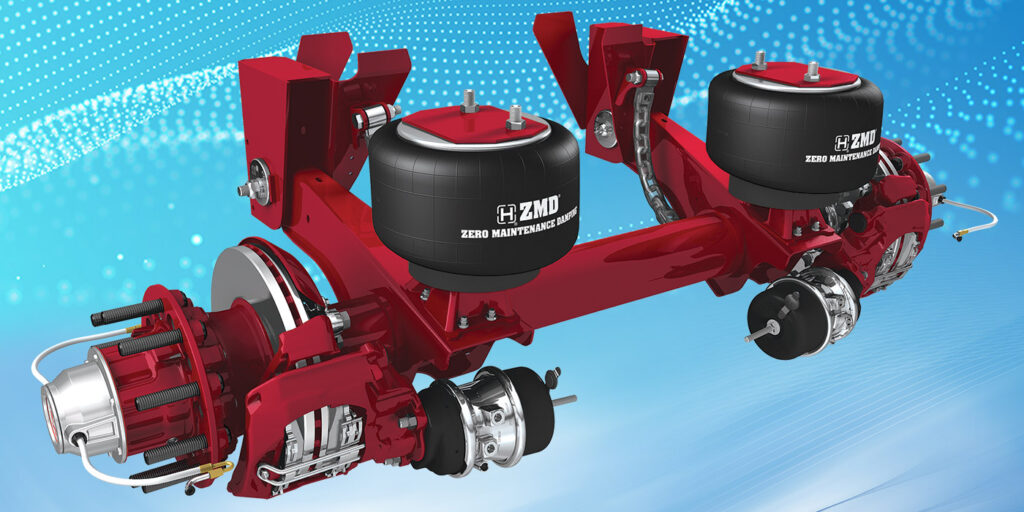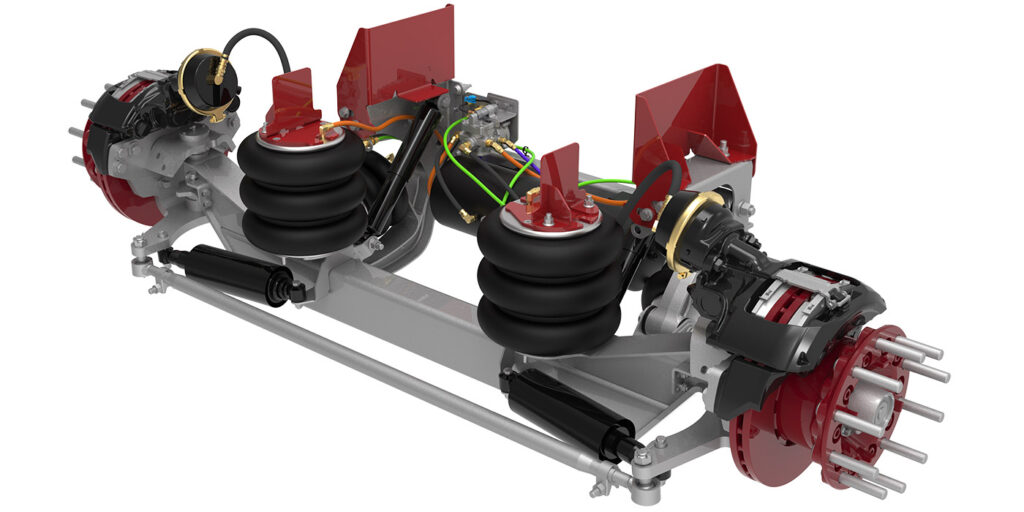With any system or component, it goes unsaid that a routine maintenance schedule is essential to a long service life and ensuring safe operation. For air suspensions, which are now widely used on commercial vehicles, a key part of any routine maintenance program involves correct ride height settings.
When it comes to maintenance, air and mechanical suspensions have a lot of similarities, noted Sean Whitefield, director marketing, Truck Commercial Vehicle Systems at Hendrickson. “These maintenance items are essential to proper operation and suspension performance,” he said, “but one big difference between the two types of suspensions is the requirement for maintaining the vehicle’s ride height.
“The ride height on a mechanical suspension is essentially non-adjustable and is established by components of the suspension,” Whitfield continued. “An air suspension also has a ride height specification set by its components, but this can be inadvertently altered by deviations to the height control valve or linkage.”
Proper ride height ensures there is a proper amount of deflection downward and upward, known as jounce and rebound, Whitfield related as well. Also, on straight truck applications, ride height can affect the frame angle, which will impact caster angle on the front steer axle, changing the way the vehicle handles.
“In terms of air suspensions, it is important to pay attention to correct ride height settings,” said Omar Fernandez, director marketing, Trailer Commercial Vehicle Systems at Hendrickson. “If the suspension ride height is set incorrectly, damage to air springs or air control components may appear.
“For air springs in particular, look for damage to the bellows or piston, or misalignment of the mountings,” Fernandez added. “For air control components, look for broken, bent or missing parts.”
Mark Molitor, senior product manager – chassis suspensions at Link Mfg., pointed out that air springs are very durable. Still, any debris that sticks to the piston can cause the bellow to wear out.
“If you are operating in a muddy area, spray off the piston that the rubber bellow rides on to help extend the life of the air spring,” Molitor advised. “In addition, a visual inspection to check for any abrasion or cuts is important. Also, if a truck or trailer has all the air exhausted after being parked for a night inspect the air connections prior to replacing the air springs. A simple soap spray is an effective method of detection if the leaks cannot be heard.”
Routine maintenance on air suspensions should include audible inspections, noted Sean Whitefield. “Essentially, you will be listening for air leaks from fittings, air lines, air springs, and the height control valve,” he said. “Air leaks can be an early indicator of a condition that can lead to a more serious problem, such as a height control valve failure, a ruptured air spring, or a broken air fitting.”
Identifying air leaks is an important first step since it’s a requirement for the driver’s pre-trip inspection. DOT regulations have a maximum allowable amount of air leakage depending on the vehicle configuration. The rate of pressure loss should not be more than 2 PSI per minute for single vehicles and no more than 3 PSI per minute for combination vehicles.
The height control valve, including the linkage which connects it to the suspension, needs to be inspected for damage such as bends or broken components that may be caused by road debris, Whitfield also pointed out. “Checking the vehicle’s ride height is important to ensure proper performance of the suspension during vehicle operation,” he said. “If the ride height is found to be out of specification, the height control valve will need to be adjusted to correct this condition. Suspension manufacturers have specific procedures to accomplish air rise height adjustments.
“For the most part, air suspensions do not require any special tools and most shops will already possess the equipment necessary to adjust, diagnose and maintain the suspension,” Whitefield continued. “Tools may consist of a tape measure to check ride height and a gauge is sometimes required to confirm air pressures while making it easier to identify any restrictions in the supply system.”
A qualified technician should review suspension literature, related Mark Molitor. Operator and maintenance manuals will show what parts need to be considered, such as height control valves and air springs that need to be inspected and eventually replaced.
Omar Fernandez also advised fleets to take advantage of information and training available from suspension suppliers. For guidelines on maintenance intervals and proper procedures, he pointed to online training that provides step-by-step guidance in the form of videos and courses. “No system is maintenance-free, and all systems regardless of suspension type should follow a routine maintenance schedule,” he added.














